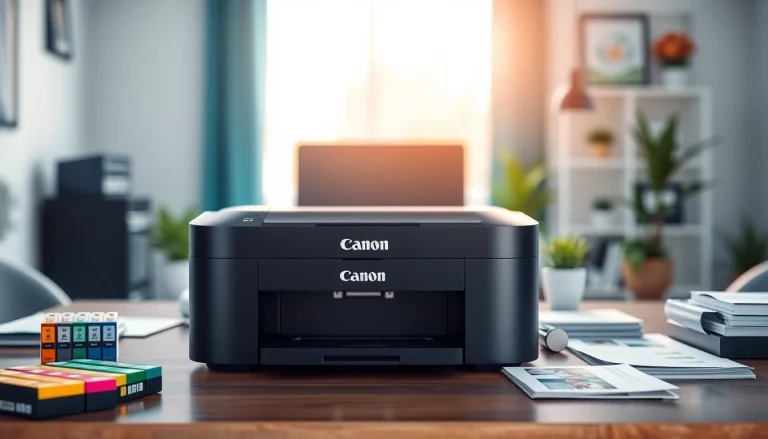
Understanding Telephone Data Collection
What is Telephone Data Collection?
Telephone data collection is a method utilized in research where data is gathered through interviews conducted over the phone. This can involve structured surveys where predetermined questions are posed, allowing researchers to obtain both qualitative and quantitative data. Interviewers contact respondents, often using a list of questions designed to extract specific information pertinent to the research objectives. This approach can include various formats, such as telephone data collection with open-ended questions or closed-ended questionnaires, adapting to the nature and purpose of the study being conducted.
Importance of Telephone Surveys in Research
Telephone surveys hold significant value in understanding consumer behavior, public opinion, and demographic information. They allow for an efficient means of collecting data from a wide geographic area without the logistical challenges of face-to-face interviews. Additionally, the immediacy of telephone interviews can yield faster results compared to traditional survey methods. The level of personal interaction inherent in telephone surveys can enhance data quality by enabling interviewers to clarify questions and probe deeper into respondents’ answers. This cohesive interaction often leads to more nuanced insights into respondents’ thoughts and behaviors.
Common Techniques and Tools
Several techniques and tools are employed in telephone data collection, including:
- Computer-Assisted Telephone Interviewing (CATI): This method leverages technology to enhance efficiency, allowing interviewers to enter respondents’ answers directly into a computer system, which streamlines data collection and processing.
- Random Digit Dialing (RDD): A technique used to ensure that a sample is representative of the broader population by randomly selecting telephone numbers.
- Structured and Semi-Structured Interviews: Depending on the research needs, interviewers may follow a highly structured format with fixed questions or a semi-structured approach that allows for more flexible interaction.
Benefits of Telephone Data Collection
Cost-Effectiveness and Efficiency
One of the main advantages of telephone data collection is its cost-effectiveness relative to in-person methods. Compared to face-to-face interviews, which require significant logistical planning and personnel costs, telephone surveys can be conducted more efficiently, reducing both time and financial investments. Moreover, with advancements in technology, call recording and analysis systems facilitate swift data entry and analysis, which helps organizations make data-driven decisions more promptly.
Access to Targeted Populations
Telephone surveys allow researchers to specifically target demographic groups that may be difficult to reach through other methods. This capability is especially beneficial for niche or smaller populations. For example, conducting surveys among specific age or socioeconomic groups can yield comprehensive insights that aid businesses and policymakers in tailoring products and services effectively. As technology continues to evolve, targeted approaches can be further refined to enhance data collection precision.
Real-Time Data Capture Advantages
The real-time nature of telephone data collection enables researchers to gather and analyze data on the fly. This immediacy not only aids in timely reporting but also allows researchers to identify trends and patterns rapidly, making it easier to pivot strategies based on preliminary findings. For instance, if early results from a survey indicate an unexpected trend, researchers can adapt their questions or approach in real-time to explore this new avenue further, thereby maximizing the output and relevance of the survey.
Challenges in Telephone Data Collection
Dealing with Response Rates
While telephone surveys are powerful tools for data collection, they do face challenges, particularly regarding response rates. Over the years, the prevalence of caller ID and mobile phones has contributed to a shifting landscape where individuals are less inclined to answer calls from unknown numbers, leading to lower response rates. To combat this issue, researchers can implement strategies such as personalized calls, pre-notifying participants about the survey, or utilizing a multifaceted approach by combining email invitations with telephone follow-ups.
Managing Interviewer Bias
Interviewer bias represents another considerable challenge in telephone data collection. The interviewer’s tone, phrasing of questions, or body language can inadvertently affect how respondents answer questions. Training interviewers thoroughly on how to maintain neutrality, as well as employing standardized scripts, can help minimize bias. Additionally, recording calls (with consent) allows for feedback and training opportunities to improve interviewer performance and ensure data integrity.
Technological Limitations
Nevertheless, technology can both enhance and hinder telephone data collection. While CATI systems and automated call technologies improve efficiency, they can also face limitations in accessibility due to older systems or lack of integration with other data systems. Researchers must ensure that their technological infrastructure is robust enough to handle the demands of modern telephone data collection, including features that support multilingual surveys and feedback mechanisms to improve overall user experience.
Best Practices for Conducting Telephone Surveys
Preparing Your Questionnaire
The success of any telephone survey largely hinges on the questionnaire design. Crafting clear, concise, and relevant questions is essential to elicit accurate responses. Researchers should pilot their surveys to identify any confusing questions or technical issues before launching. Additionally, keeping operational objectives in mind during the drafting process ensures that each question serves a specific purpose toward the research goal.
Training Interviewers Effectively
To capture high-quality data, it is imperative that interviewers receive thorough training. This training should cover not just the technical aspects of using any required technology, but also the interpersonal skills necessary for engaging respondents effectively. Mock interviews can provide practical experience, allowing interviewers to develop comfort and competency while minimizing the occurrence of errors during actual surveys.
Analyzing and Interpreting Data
Once data collection is complete, the subsequent analysis must be conducted rigorously. Using statistical software to analyze survey results can help in recognizing patterns, correlations, and trends that inform decision-making. Moreover, it’s crucial for researchers to avoid overinterpreting the data, grounding their findings in the context of the study’s limitations and ensuring that recommendations are substantiated through a robust analysis process. Ultimately, clear communication of the findings is vital, using visuals and straightforward language to relay insights to stakeholders.
Future Trends in Telephone Data Collection
Integration of AI Technologies
The integration of artificial intelligence (AI) technologies into telephone data collection represents a burgeoning trend. AI can streamline the survey process, improve respondent outreach with automated systems, and analyze large data sets quickly. For instance, AI-powered chatbots could complement human interviewers by conducting preliminary surveys or follow-ups, thus expanding outreach and increasing efficiency. However, ethical considerations around data privacy and AI interaction must be carefully navigated to maintain trust with respondents.
Hybrid Approaches to Data Collection
The rise of hybrid methods combining telephone surveys with online data collection techniques allows researchers to tap into a greater array of data sources. For example, researchers might conduct follow-up interviews over the phone with respondents who initially filled out an online survey. This multifaceted approach not only increases the potential response rates but also enables a comprehensive understanding of the research subject by utilizing diverse data collection techniques that complement each other.
Impact of Mobile Technology
Mobile technology continues to reshape telephone data collection strategies. Surveys optimized for mobile devices cater to a wider audience while enhancing user experience. Calls can be initiated via messaging apps or voice calls, depending on respondent preferences. Therefore, adapting to advancements in mobile technology is essential for ensuring that data collection methods align with the evolving communication habits of the population, thus maintaining the relevance and reliability of research findings.






